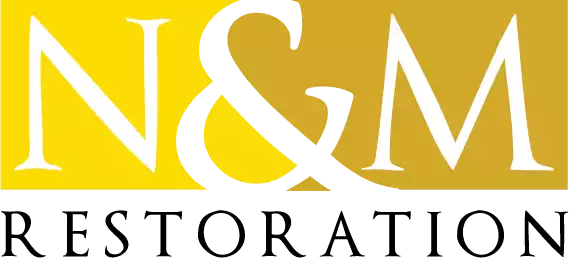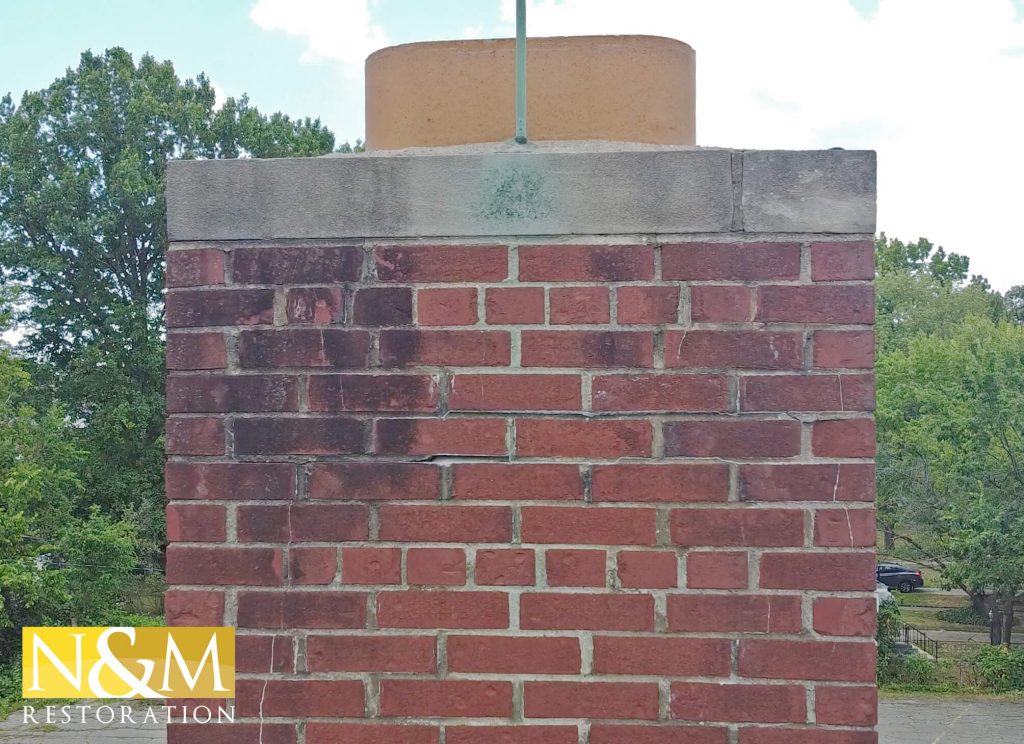CRACKED CHIMNEY FLUE TILES VS. CRACKED CHIMNEY BRICKS
When most people think about chimney cracks, they picture cracked brick on the chimney’s exterior. However, there is a second type of chimney crack you need to be aware of. Cracked flue tiles can cause carbon monoxide to seep into your home, which could lead to a house fire. Flue tiles run along the inside of the chimney, surrounded by the brick exterior.
It’s nearly impossible to see cracked flue tiles unless you’re chimney-sweeping. This is why we conduct a thorough inspection during our chimney sweeps to pinpoint issues early on. The other option is to not know about a problem, use the fireplace, and then experience potentially deadly consequences. If you’re in need of a professional chimney sweep, contact N&M Restoration at (248) 924-9798.
WHAT CAUSES CHIMNEY CRACKS?
Here are some common causes of chimney cracks:
- Cracked flue tiles form when heat is not evenly disbursed in the chimney. The tiles expand with the heat, but the targeted heat spots expand differently than in colder areas. The flue tiles buckle under pressure until they crack or split.
- Moisture trapped within the masonry can lead to brick cracks. The bricks expand and contract during the freeze-thaw cycle. A properly constructed chimney should not have moisture issues, but worn mortar, cracked bricks, or poorly laid masonry may allow moisture to come through.
- New chimneys may crack as the mortar hardens. It takes a few weeks for mortar to fully cure and solidify. If a newly constructed chimney is exposed to heavy winds, it may shift and create tension. Steel rods can prevent this issue, but not all chimney installers take this precaution.
- Inexperienced chimney installers may skip out on key details. For instance, there should be a gap between the flue tiles and the exterior brick. This allows room for the tiles to expand as they heat up. If there is no gap, the tiles will press against the bricks and crack.
- Foundation shifting can crack bricks, chimneys, concrete, and more. The cracks you see on your chimney may be an indication of a much bigger issue below.
IS A CRACKED CHIMNEY DANGEROUS?
Absolutely! You should not use your fireplace if you have cracked bricks or cracked flue tiles. If left unattended, the chimney could collapse or lean away from the house. Cracked bricks may also let in more moisture, which will lead to more problems. Cracked flue tiles can send toxic fumes into your home, and all of these matters could produce a house fire. Don’t wait until it’s too late to get your chimney repaired.
HOW TO FIX A CRACKED CHIMNEY
The best way to fix a cracked chimney is to get a professional chimney inspection. We can evaluate the root cause of the cracks and then recommend the appropriate course of treatment. Whether you need new flue tiles, mortar tuckpointing, brick repair, or other chimney repair services, N&M Restoration has you covered. Give us a call at (248) 924-9798 to schedule your chimney inspection.





